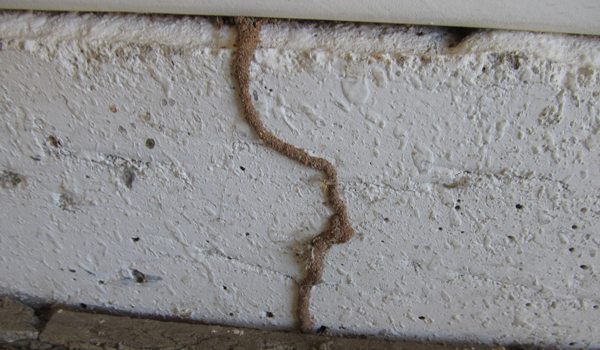While the drove of tourists who visited the valley of the sun during our unusually mild and rainy spring may not have appreciated the inclement weather, one valley resident most certainly did: the Desert Subterranean Termite. Water is conducive to these social insects that live in the soil in colonies that can number 300,000. A “mud tube” is often a sign that these pests have entered your home, but they are not always visible and can hide for years behind walls, plumbing fixtures and cabinets.
“The old adage about termites is especially true here in the valley: ‘There are homes that have termites – and those that will get them,’” notes Nathan Woolf, co-founder of Blue Sky Pest Control. “Last year’s heavy rains and this unusually damp spring mean our technicians are seeing a bumper crop of termites. And while the upcoming triple digits normally slow down their activity, our monsoons kick them right back into high gear.”
Termites are so common here that every home built in the valley is required to have a termite treatment prior to the pouring of the foundation. This pre-treatment has a three-year warranty. Since the products used for these pre-treatments break down over time, Blue Sky Pest Control recommends having a termite inspection, especially for older homes because left undetected, termites can cause significant structural damage.
“Termites genuinely own their nasty reputation since, unlike other critters, they NEVER rest – they’re active 24 hours-a-day, seven days-a-week, 365 days-a-year,” shares Curtis Whalen, co-founder of Blue Sky Pest Control. “In our industry, modest estimates indicate that there is $5 billion worth of termite damage per year in the U.S. alone.”
Whalen also notes that even though Arizona is situated in the desert, our state is in a high-pressure zone for bugs, and in the Top 5 states in the nation for termite treatments.
“Arizona has a lot of pests because of our indigenous species, as well as the micro-environments we have created, with things like drip-systems creating man-made moisture pockets that are perfect for insects and pests like termites (all pests need food, shelter, and water),” adds Whalen.
Blue Sky Pest Control recommends periodically re-establishing the barrier established during your home’s pre-treatment and consistently monitoring as the best defense against Arizona’s subterranean termites.
In his 2005 article, “Arizona Termites of Economic Importance,” Dr. Baker of the University of Arizona states:
“In the post-construction phase, inspect your home twice a year or better yet, employ a pest management professional (PMP) to do an annual inspection. The practice of repeated visual inspections ensures that termite infestations will be promptly detected once termites have invaded the home. This practice allows control methods to be employed contemporaneous to the infestation, reducing the risk of serious structural damage.”
“If you’re in doubt in regard to your home’s age or condition, having your home inspected by a state-certified termite inspector is a great place to start,” explains Whalen. “If a termite infestation is found during inspection or a homeowner just wants to proactively re-establish the termite barrier, there are some excellent options available to keep your home protected.”




